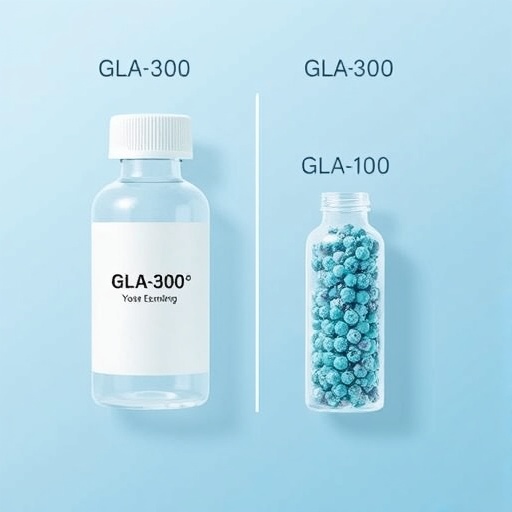The ongoing evaluation of diabetes treatment options continues to generate interest within the medical community, especially in terms of insulin therapies. A new study sheds critical light on the efficiency of two widely used insulin formulations, Gla-300 and Gla-100, through the lens of age-related responses among individuals living with Type 2 Diabetes in France. This post hoc analysis reveals vital data reflecting contrasts in therapeutic efficacy and enhances the understanding of how age influences diabetes management.
Managing Type 2 Diabetes can be particularly challenging. A spectrum of factors—including age, body composition, and lifestyle habits—affects how insulin behaves in the body. With an aging population increasingly affected by diabetes, it becomes essential to scrutinize how different formulations can meet varied medical needs. The introduction of Gla-300 has been seen as a significant advancement in the realm of diabetes management, but how it stacks up against its predecessor, Gla-100, remains a crucial area of inquiry.
The study led by Darmon et al. meticulously analyzed data collected from a diverse cohort of participants, ranging from younger adults to the elderly. By employing an observational longitudinal framework, researchers were equipped to assess long-term outcomes, particularly focusing on glycemic control and patient-reported outcomes. Such methodological rigor offers invaluable insights into the real-world implications of insulin therapy as experienced over time by individuals of varying ages.
Researchers evaluated clinical data that highlighted therapeutic outcomes, emphasizing significant differences in the efficacy of Gla-300 and Gla-100. Notably, Gla-300 exhibited a more prolonged action profile, leading to stable glucose control among older adults. In contrast, younger individuals found that Gla-100 provided more immediate results, reiterating the importance of customizing treatment protocols based on demographic factors. These findings come as a beacon of hope for clinicians tailoring therapies for older patients who often exhibit more complex health profiles.
The implications of these results cannot be overstated. With Type 2 Diabetes becoming increasingly prevalent among older populations, understanding the differential impacts of various insulin regimens is critical. The sustained efficacy of Gla-300 could potentially serve as a game-changer, offering a reliable treatment for managing long-term glycemic levels without significant spikes. This extended duration of action aligns well with the lifestyle behaviors often affected by aging, thereby reducing the overall burden of managing diabetes.
Moreover, diversified responses to insulin formulations underscore the need for individualized treatment approaches. Not all patients will benefit equally from a single therapy; therefore, gathering data on how age influences treatment outcomes remains essential. For healthcare providers, the findings elucidate the necessity of considering patient age when prescribing insulin regimens, underscoring the shift towards personalized medicine in the management of Type 2 Diabetes.
In addition to assessing glycemic control, the study also took a closer look at safety profiles. It was crucial to determine whether the enhanced efficacy of Gla-300 came at the cost of adverse effects. Against this backdrop, the research indicated no significant increase in hypoglycemic events, suggesting that patients could enjoy the benefits of Gla-300 without additional risks. Such safety assurances enact a substantial potential for increased adoption in clinical settings.
One cannot overlook the economic implications of insulin treatments; particularly in a healthcare landscape grappling with rising costs. As Gla-300 demonstrates superior performance, especially in older patients, healthcare policymakers may find it advantageous to promote its use. The long-term cost-effectiveness of maintaining glycemic control via Gla-300 could ultimately alleviate strain on healthcare systems, potentially leading to reductions in diabetes-related complications and their subsequent economic burdens.
Furthermore, the significance of education cannot be understated. Empowering patients to understand their treatment options fosters an environment of engaged healthcare compliance. The extensive analysis provided by this study can serve as a foundational tool for patient education initiatives, equipping individuals with the knowledge needed to discuss their treatment regimens effectively with healthcare providers.
Another aspect of this research worthy of emphasis is the psychological impact of effective diabetes management. With improved glycemic control often comes enhanced quality of life, alleviating the stress and anxiety that can plague individuals coping with chronic diseases. Feeling more in control of one’s health can lead to better adherence to treatment plans, ultimately translating into improved clinical outcomes.
This study not only speaks to current therapeutic trends but also sets the stage for future research. Understanding how insulin therapies can be optimized for various demographics opens avenues for further exploration, possibly leading to customized insulin formulations tailored to the nuanced needs of specific patient groups. Future investigations may explore additional therapeutic indices, further refining our comprehension of diabetes management.
In conclusion, the work of Darmon et al. presents compelling evidence supporting the efficacy of Gla-300 over Gla-100 in the context of age-diverse populations. These findings bolster the argument for personalization in diabetes treatment regimens, revolutionizing how healthcare providers approach insulin therapy. As we continue to unravel the complexities of Type 2 Diabetes, studies such as this one pave the way towards more effective and patient-centered care models.
The future of diabetes care hinges on our ability to adapt and respond to the unique needs of our aging population while optimizing treatment methodologies. Through continuous research and patient-centric strategies, we can anticipate a brighter outlook for individuals living with Type 2 Diabetes.
Subject of Research:
The efficiency of Gla-300 versus Gla-100 across age groups in people living with Type 2 Diabetes in France.
Article Title:
Efficiency of Gla-300 versus Gla-100 Across Age Groups in People Living with Type 2 Diabetes in France: A Post Hoc Analysis of an Observational Longitudinal Study.
Article References:
Darmon, P., Hanon, O., Gourdy, P. et al. Efficiency of Gla-300 versus Gla-100 Across Age Groups in People Living with Type 2 Diabetes in France: A Post Hoc Analysis of an Observational Longitudinal Study. Adv Ther (2025). https://doi.org/10.1007/s12325-025-03381-7
Image Credits: AI Generated
DOI:
Keywords: diabetes, insulin therapy, Gla-300, Gla-100, Type 2 Diabetes, age groups, observational study, glycemic control, treatment efficacy, patient-centered care.




